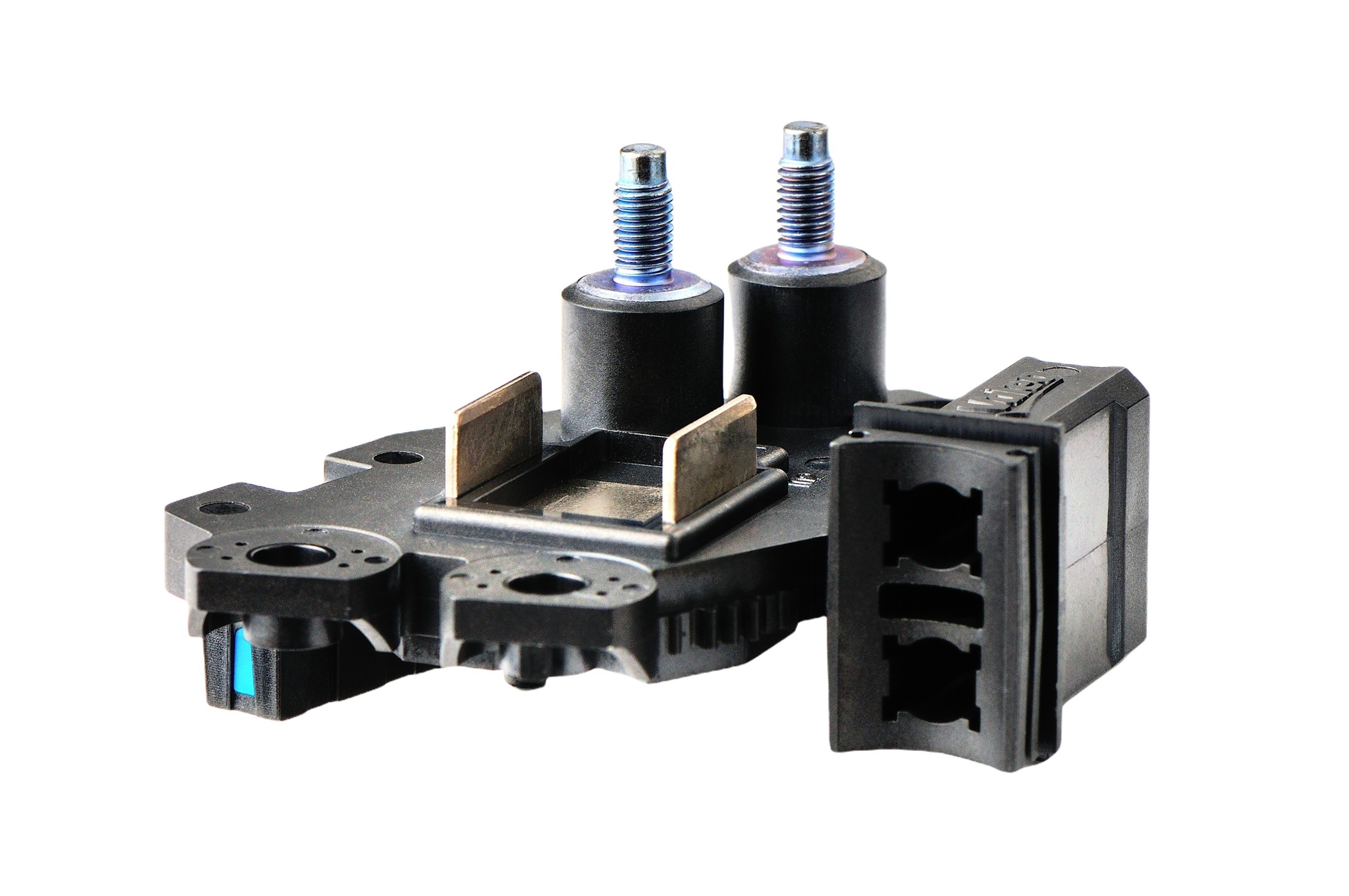Insert Molding
What is the Overmolding Tech in Ming-Li company?

Overmolding is a process similar to insert molding, but instead of encapsulating a preformed component, it involves molding one material (typically a softer or more flexible material) over another substrate or component. This process adds a layer of material over an existing part to provide additional functionalities, aesthetics, or protection. Here are some abilities and advantages of overmolding technology:
-
Enhanced Product Performance: Overmolding allows for the combination of different materials with complementary properties, such as a rigid substrate with a soft, grippy outer layer. This can improve product performance, comfort, and usability.
-
Improved Ergonomics and Aesthetics: By adding soft-touch or textured surfaces, overmolding enhances the ergonomic feel of products, making them more comfortable to handle. It also enables customization of appearance, allowing for branding, color accents, or decorative features.
-
Increased Durability and Protection: Overmolding provides an additional layer of protection to the substrate, shielding it from environmental factors such as moisture, abrasion, impact, and chemical exposure. This enhances the durability and longevity of the final product.
-
Reduced Assembly Steps: Overmolding consolidates multiple parts into a single component, reducing the need for assembly processes and simplifying supply chain logistics. This streamlines production, reduces labor costs, and minimizes potential points of failure.
-
Versatility in Design: Overmolding offers flexibility in design, enabling the creation of complex shapes, contours, and integrated features that would be difficult or impossible to achieve with traditional manufacturing methods. This opens up new possibilities for product innovation and differentiation.
-
Material Compatibility: Overmolding accommodates a wide range of material combinations, including thermoplastics, elastomers, metals, and textiles. This versatility allows manufacturers to tailor material properties to specific application requirements, such as hardness, flexibility, or chemical resistance.
-
Cost Efficiency: While overmolding may involve higher initial tooling costs compared to traditional molding processes, it can lead to overall cost savings by reducing assembly time, material waste, and the need for secondary finishing operations. It also enables the use of cost-effective substrates with a premium overmolded finish.
-
Scalability: Overmolding is a scalable process suitable for both low-volume production and high-volume manufacturing. It offers consistent part quality and dimensional accuracy across large production runs, making it suitable for a wide range of industries and applications.
Overall, overmolding technology offers numerous advantages in terms of product functionality, aesthetics, durability, and manufacturing efficiency, making it a valuable process for creating innovative and high-quality products in various industries such as consumer electronics, automotive, medical devices, and consumer goods.
How to make overmolding well?
Creating high-quality overmolded parts involves several key steps and considerations throughout the manufacturing process. Here's a comprehensive guide on how to make overmolding successful:
-
Design for Overmolding:
- Consider the functionality and aesthetics of the final product when designing the overmolded part.
- Ensure proper fit and alignment between the substrate and the overmolded material.
- Design features such as undercuts or bonding surfaces to facilitate adhesion between the substrate and the overmold.
- Optimize part geometry to minimize stress concentrations and potential for defects.
-
Material Selection:
- Choose compatible materials for the substrate and the overmolded material, considering factors such as adhesion, mechanical properties, and environmental resistance.
- Conduct compatibility testing to ensure proper bonding between the materials.
- Consider material properties such as hardness, flexibility, and color to achieve the desired performance and aesthetics.
-
Surface Preparation:
- Clean and prepare the surface of the substrate to remove any contaminants or residues that could impair bonding.
- Use surface treatments or primers to promote adhesion between the substrate and the overmolded material.
- Ensure that the substrate surface is free from defects or irregularities that could affect the quality of the overmold.
-
Mold Design:
- Design molds with precision to accommodate both the substrate and the overmolded material.
- Optimize mold geometry to ensure proper material flow and distribution during the molding process.
- Incorporate features such as venting and gating systems to prevent air entrapment and ensure uniform filling of the mold cavity.
- Use multi-shot or insert molding techniques as needed to achieve complex overmolded parts.
-
Injection Molding Process:
- Set appropriate injection molding parameters such as temperature, pressure, and cycle time to optimize material flow and bonding.
- Ensure proper alignment and positioning of the substrate within the mold cavity.
- Monitor the molding process closely to detect and address any issues such as air traps, voids, or flash.
-
Quality Control:
- Implement quality control measures such as visual inspection, dimensional measurement, and adhesion testing to ensure that overmolded parts meet specifications.
- Conduct periodic sampling and testing throughout the production run to verify consistency and quality.
- Inspect molds regularly for wear, damage, or degradation that could affect part quality.
-
Post-Molding Operations:
- Trim excess flash or sprues from overmolded parts to achieve the desired final geometry.
- Perform secondary operations such as machining, assembly, or finishing as needed to complete the final product.
-
Continuous Improvement:
- Collect data and feedback from the production process to identify areas for improvement.
- Implement changes or optimizations to enhance efficiency, quality, and cost-effectiveness.
By following these steps and paying attention to detail at each stage of the overmolding process, manufacturers can produce high-quality parts that meet the requirements of their intended applications.
